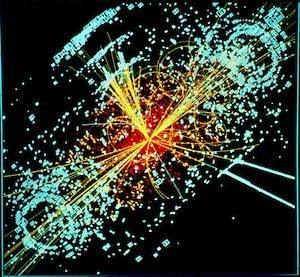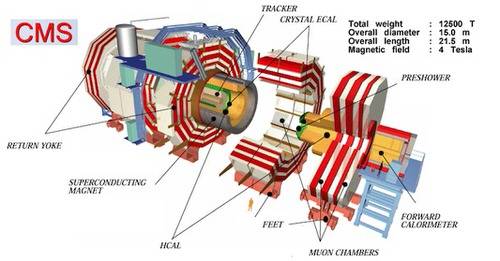
Want to hang out with the people who run the CMS? No, not the content management system. The Compact Muon Solenoid. It’s one of the two big detectors at the Large Hadron Collider (LHC), the largest and highest-energy particle accelerator in the world.

CERN physicist Dr. Albert De Roeck is hosting a Google+ Hangout tomorrow from inside the cavern where the experiment takes place, about 100 meters underneath Cessy, France. He’ll explain the CMS experiment and take questions about the crazy frontiers of particle physics.
The CMS is one of the two general-purpose LHC experiments searching for the Higgs boson, sometimes referred to as the “God particle” when people can’t afford to be precise (like in blog headlines). It’s a theoretical, elementary particle that we need to find to explain why bigger particles have mass.
In other words, for the physics of today to work, we have to just assume that the Higgs is there. It has to be, or else we go back to the drawing board. One of the main reasons the LHC was built was to create particle collisions enormous enough to detect it with the most sensitive instruments ever constructed. The Compact Muon Solenoid is one of those instruments.

On February 10, from 17:00 to 18:00 Central European time, Dr. De Roeck will explain how this incredibly sensitive piece of equipment works and what it’s looking for. Here’s a chart of that start time for every time zone. For the U.S., it’s 11:00 a.m. Eastern, 8:00 a.m. Pacific.
The Hangout will appear on the CMS Experiment Google+ page.

Lead image by Lucas Taylor/CERN via Wikimedia Commons
CMS diagram via Wikimedia Commons

















